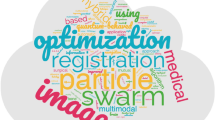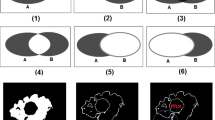Abstract
Neuroimagery must be visually checked for unacceptable levels of distortion prior to processing. However, inspection is time-consuming, unreliable for detecting subtle distortions and often subjective. With the increasing volume of neuroimagery, objective measures of quality are needed in order to automate screening. To address this need, we have assessed the effectiveness of no-reference image quality measures, which quantify quality inherent to a single image. A data set of 1001 magnetic resonance images (MRIs) recorded from 143 subjects was used for this evaluation. The MRI images were artificially distorted with two levels of either additive Gaussian noise or intensity nouniformity created from a linear model. A total of 239 different quality measures were defined from seven overall families and used to discriminate images for the type and level of distortion. Analysis of Variance identified two families of quality measure that were most effective: one based on Natural Scene Statistics and one originally developed to measure distortion caused by image compression. Measures from both families reliably discriminated among undistorted images, noisy images, and images distorted by intensity nonuniformity. The best quality measures were sensitive only to the distortion category and were not significantly affected by other factors. The results are encouraging enough that several quality measures are being incorporated in a real world MRI test bed.
Similar content being viewed by others
References
Avcibas, A., Sankur, B., and Seafood, K. (2002). Statistical evaluation of image quality measures. J. Electron. Imag. 11(2), 206–223.
Carley-Spencer, M., Woodard, J., Dixon, J., and Cornett, T. (2005) Content-based image retrieval and image quality of structural MRI. Neuroimage Abs (26). 11th Annual Meeting of the Organization for Human Brain Mapping. Toronto.
Cohen, L. (1989) Time-frequency distributions—A Review, Proc. IEEE 77, 941–981.
Collins, D., Neelin, P., Peters, T., and Evans, A. (1994) Automatic 3D intersubject registration of MR volumetric data in standardized Talairach space. J. Comput. Assist. Tomogr. 18(2), 192–205.
Collins, D., Zijdenbos, A., Kollokian, V., et al. (1998). Design and construction of a realistic digital brain phantom. IEEE Trans. Med. Imag. 17(3), 463–468.
Debrunner, V., Ozaydm, M., and Prezebinda, T. (1999) Resolution in time-frequency, IEEE Trans. Signal Process. 47(3), 783–788.
Eskicioglu, A., Fisher, P., and Chen, S. (1995) Image quality measures and their performance. IEEE Trans. Commun. 43(12), 2959–2965.
Hadjidemetriou, E., Grossberg, M., and Nayar S. (2004) Multiresolution histograms and theiruse for recognition. IEEE Trans. PAMI 2(7), 831–847.
Hoyt, J., Smith, K., Hamilton, G., Cornett, T., and Carley-Spencer, M. (2005) NeuroServ: An Information System for Storage, Retrieval, Sharing, and Discovery of Human Brain Imaging Data-With Application to DTI. Neuroimage Abs (26) (2005). 11th Annual Meeting of the Organization for Human Brain Mapping. Toronto.
Jayant, N. and Noll, P. (1984) Digital Coding of Waveforms, Englewood Cliffs, Prentice Hall.
Kwan, R., Evans, A., and Pike, G. (1999) MRI simulation-based evaluation of image-processing and classification methods. IEEE Trans. Med. Imag. 18(11), 1085–1097.
Martin, G., Morison, W., and Durrani, T. (2004) Fast and accurate image registration using Tsallis entropy and simultaneous perturbation stochastic approximation. Electron. Lett. 40(10), 595–597.
Papoulis, A. (1968) Systems and Transforms with Applications in Optics, Malabar, FL: Robert Krieger.
Sheikh, R., Wang, Z., Cormack, L., and Bovik, A. (2002) Blind quality assessment for JPEG2000 compressed images. Proceedings of the IEEE Asilomar Conference on Signals Systems and Computers November 3–6, Pacific Grove, CA.
Simoncelli, E. and Freeman, W. (1995) The steerable pyramid: A flexible architecture for multi-scale derivative computation. Proceedings of the Second IEEE International Conference on Image Proceessing Vol. 3, pp. 444–447.
Sled, J. and Pike, G. (1998) Standing-wave and RF penetration artifacts caused by elliptical geometry: an electrodynamic analysis of MRI IEEE Trans. Med. Imag. 17(4), 653–662.
Sled, J., Zijdenbos, A., and Evans, A. (1996) A non-parametric method for automatic correction of intensity non-uniformity in MRI data. IEEE Trans. Med. Imag. 17(1), 87–97.
Srivastava, A., Lee, B., Simoncelli, E., and Zhu, S. (2003) On advances in statistical modeling of natural images. J. Math. Imag. Vision 18(1), 17–33.
Tsallis, C. (1998) Possible generalization of Boltzmann-Gibbs statistics. J. Stat. Phys. 52(1), 479–487.
van den Branden Lambrecht, C. (1998) (ed.) Special issue on image and video quality metrics, Signal Processing 70(3), 152–154.
Wang, Z., Bovik, A., and Lu, L. (2002a) Why is image quality assessment so difficult? Proceedings of the IEEE International Conference on Acoustics Speech and Signal Processing 4, 3313–3316.
Wang, Z., Sheikh, H., and Bovik, A. (2002b) No-reference perceptual quality assessment of JPEG compressed images. Proceedings of the IEEE International Conference on Image Processing, September 22–25, Rochester, NY.
Wang, Z. and Simoncelli, E. (2004) Local phase coherence and the perception of blur. In: Thrun, S. and Scholkopf, B. (eds.) Advances in Neural Information Processing Systems. NIPS-03, vol. 16, Cambridge, MA: MIT Press (in press).
Wang, Z. and Simoncelli, E. (2005) Reduced-reference image quality assessment using a wavelet-domain natural image statistic. Proceedings of the Human Vision and Electronic Imaging, X, SPIE. 5666, Jan 17–20, 149–159.
Wilson, R. and Knutsson, H. (1988) Uncertainty and inference in the visual system. IEEE Trans. Syst. Man and Cybernetics 18(2), 305–312.
Author information
Authors and Affiliations
Corresponding author
Rights and permissions
About this article
Cite this article
Woodard, J.P., Carley-Spencer, M.P. No-Reference image quality metrics for structural MRI. Neuroinform 4, 243–262 (2006). https://doi.org/10.1385/NI:4:3:243
Issue Date:
DOI: https://doi.org/10.1385/NI:4:3:243




